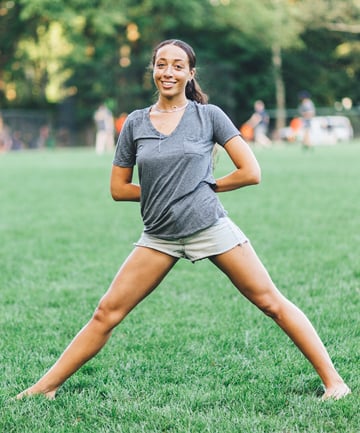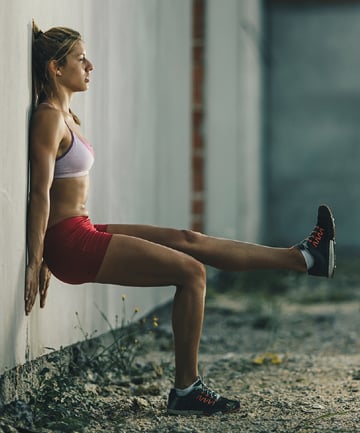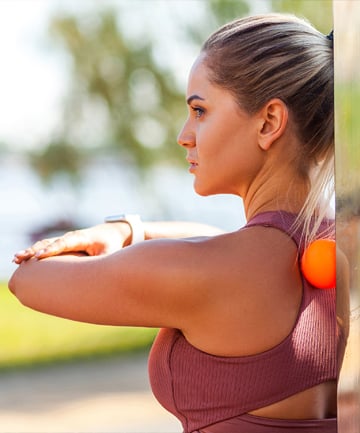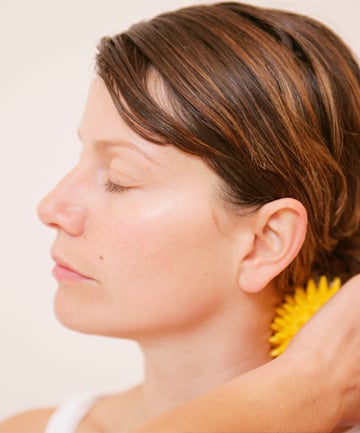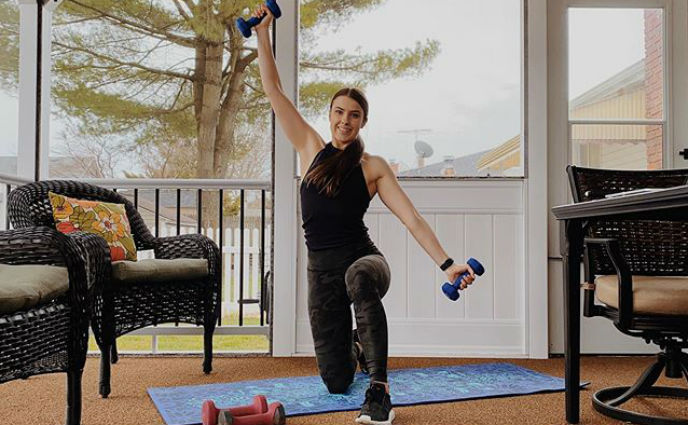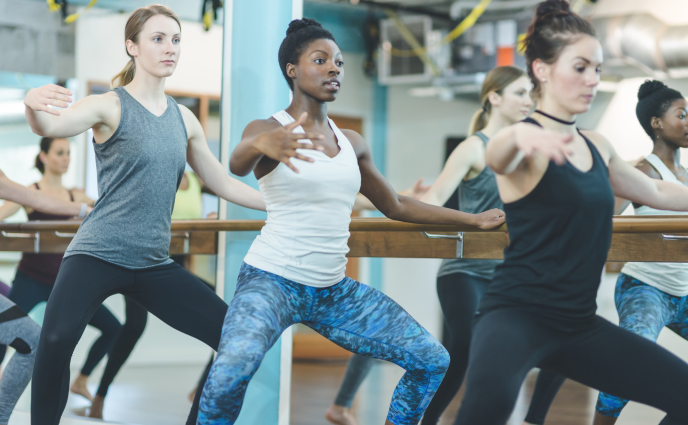"To gently stretch and release the neck muscles, tilt your right ear slowly towards your right shoulder until you feel a stretch in the left side of the neck. At the same time, gently reach your left hand towards the floor to increase the stretch. Pause for a couple easy breaths. Then, gently turn your nose to point down towards the floor and feel the stretch move towards the back of the neck. Pause for two or three breaths here. Repeat on the other side," recommends Hardy.
Image via PhotoAlto/Frederic Cirou/PhotoAlto Agency RF Collections/Getty
Cardino says to ensure you're sitting up straight for this one: "Interlace your fingers behind your back. Bend your elbows and bring your hands to one hip or side. Keeping your elbows bent, squeeze your elbows and shoulder blades toward the spine. Tilt the head toward your hands so that your ear moves toward your shoulder — this creates a lovely stretch into the opposite shoulder and neck. Take a few deep breaths as high into your chest and collarbone as you can, relaxing the neck with each exhale."
To switch sides: "Roll the head forward, take hands to the other hip, then roll the head toward the hands and repeat. After a few deep breaths on the second side: keep your hands interlaced, roll the head forward, straighten out your arms behind you as you squeeze your shoulder blades together and lift your chest up toward your face. Keep the head tilted down and you lift your chest up, and take a few deep breaths into your upper ribs and heart-space before releasing from the stretch."
Image via Westend61/Getty
"Stand with your back and head against a wall (allow your low back to naturally curve away from the wall). Have your feet hip width apart, and a few inches away from the wall. With your arms straight down by your sides, press the backs of your hands against the wall. As you feel your body being realigned by the wall's support, breathe deeper and slower than usual."
"Feel for staying completely connected to the wall at your head, upper back and shoulders, pelvis/butt, and arms for at least 10 breaths. With each exhale, lightly engage your abdominal muscles to feel how the core should be working when your posture is aligned well. The wall provides a felt-sense in the body of what an "upright" posture feels like — when you step away from the wall and resume working at the computer, try to retain that inner feeling throughout your back, neck, and head," says Cardino.
Image via skynesher/E+/Getty
"The following is an exercise to release the infraspinatus, one of the four rotator cuff muscles," says Hardy. "To start, you'll lie flat on your back and have a ball handy (a tennis ball or similar size therapy ball will do nicely). Place the ball directly behind the shoulder blade, and rest on top of it so that the weight of your body sinks onto the ball. Allow the pressure from the ball to sink gently into the muscles on the back of the shoulder blade. Hold for 3 minutes, breathing easily and deeply. Repeat on the other shoulder."
Image via Khosrork/iStock/Getty Images Plus/Getty
Another great exercise from Hardy: Stand facing a wall, and take your tennis ball (or therapy ball) and place it in front of your chest, beneath the collarbone and just inward from your armpit. Lean gently into the ball, with the wall for support, and feel the muscles in the chest area start to release. Gently hold for 1-3 minutes, breathing easily and deeply. Repeat on the other side.
Image via Stella/Getty



